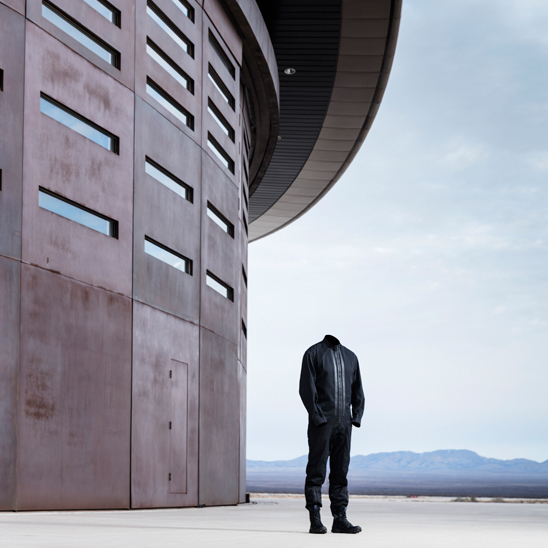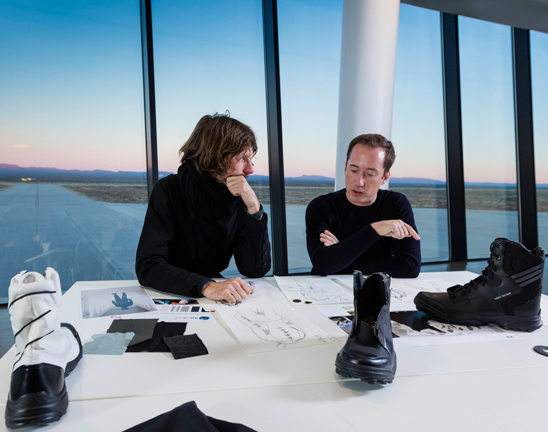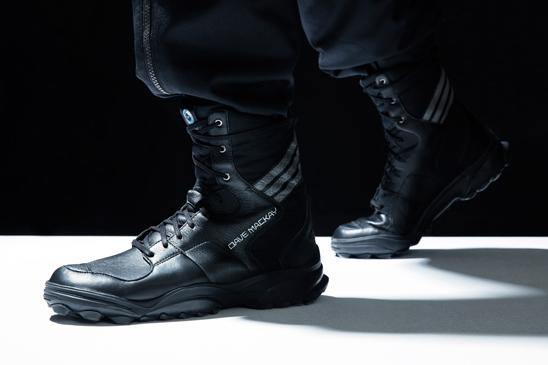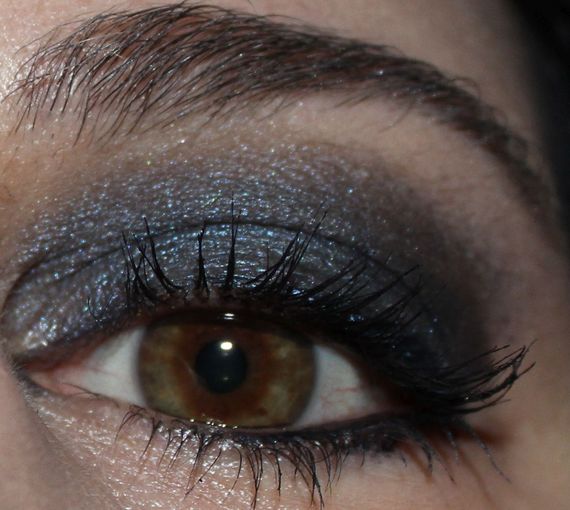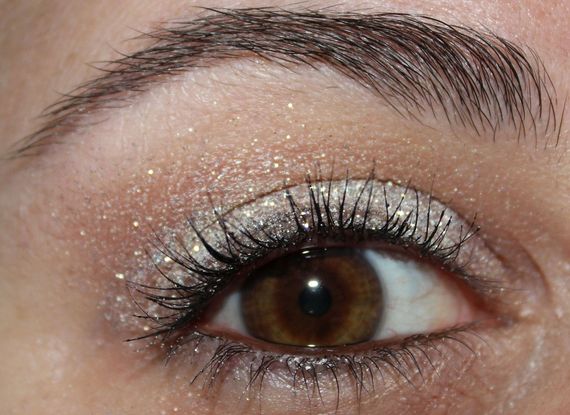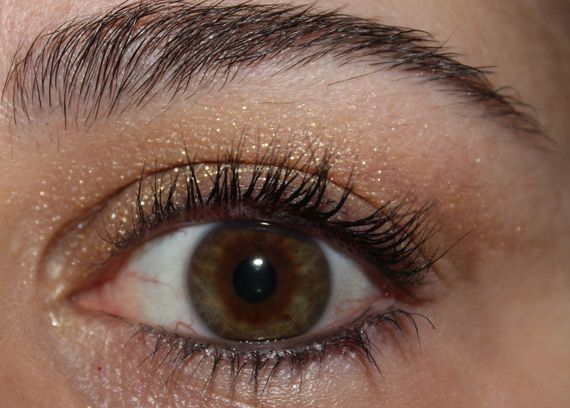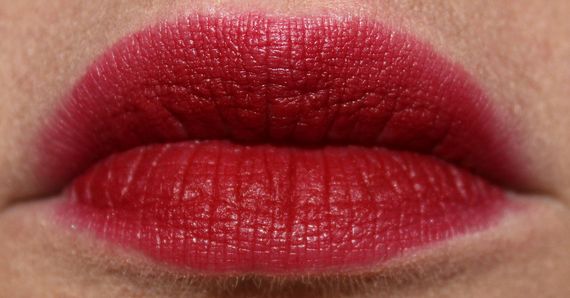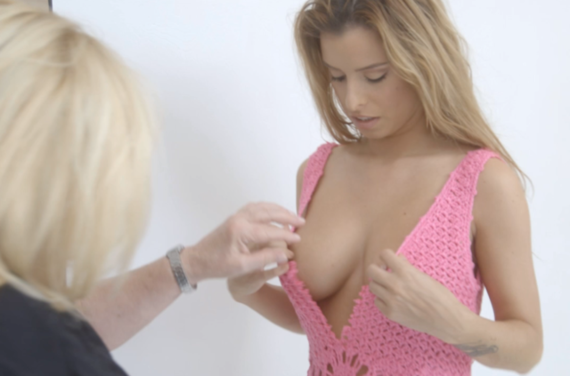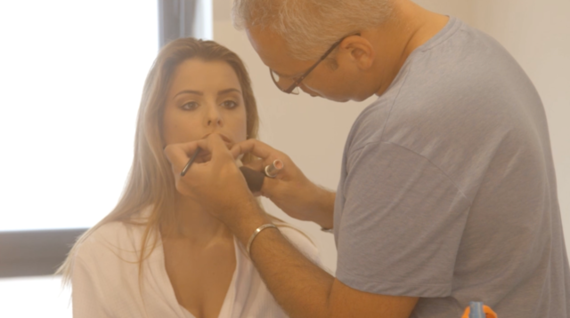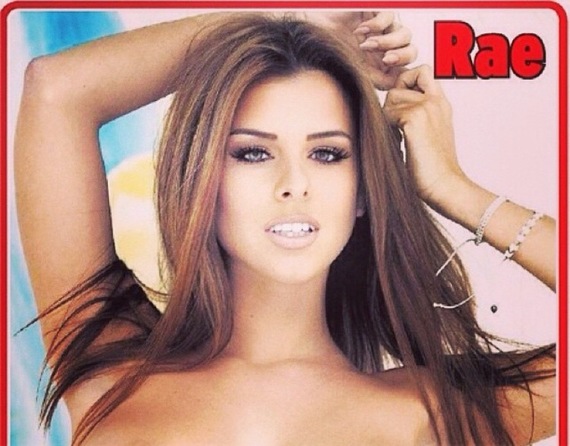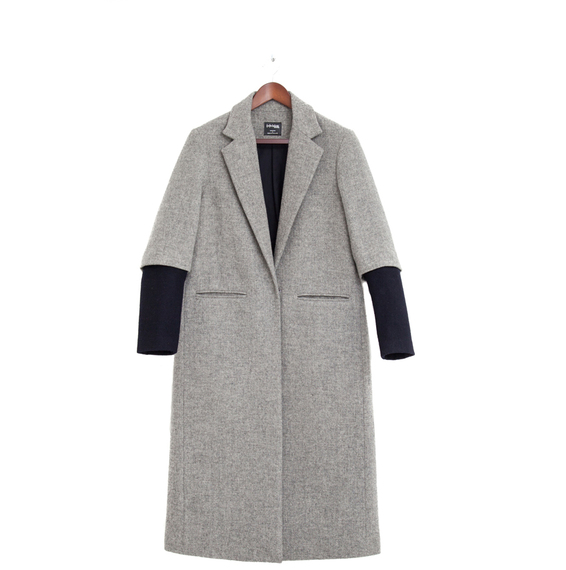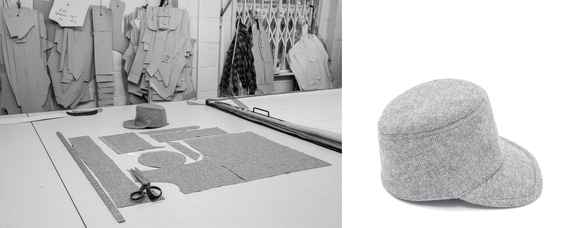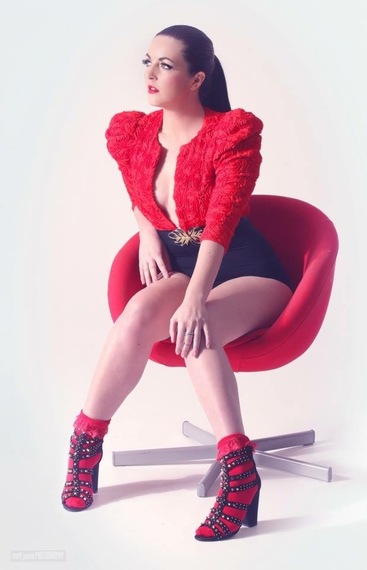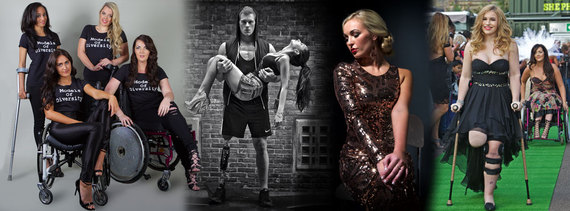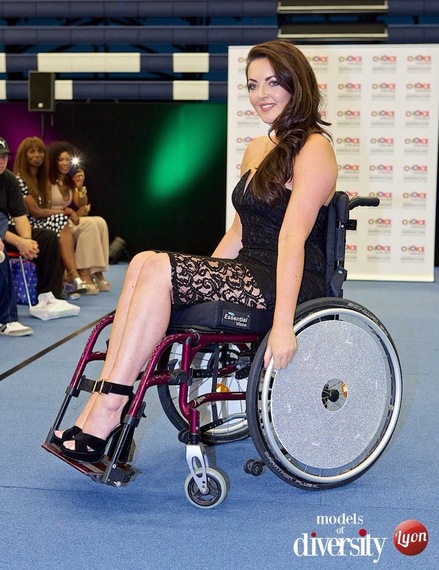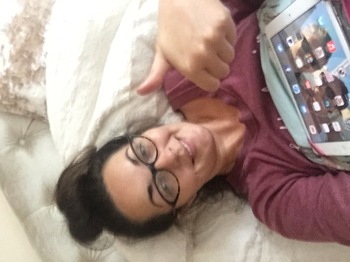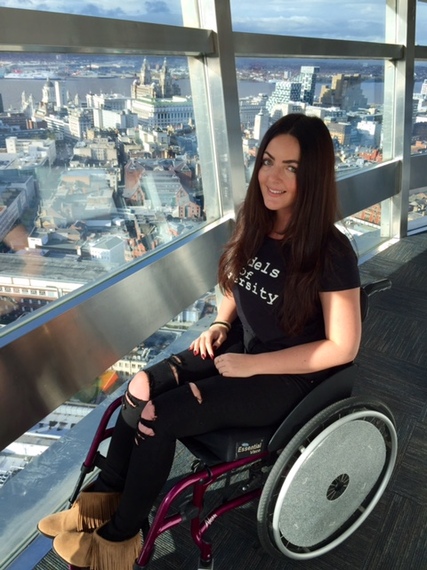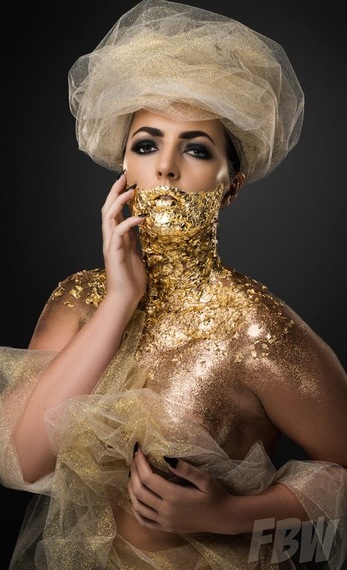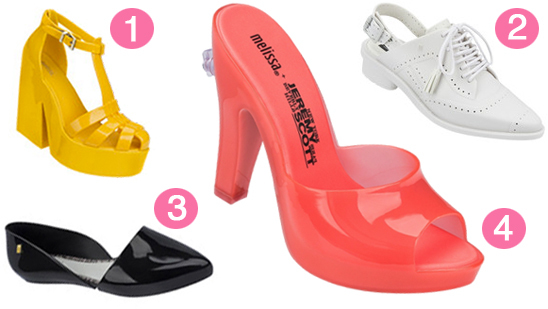![banner]()
Life as a model is a tough one. Constantly being judged on your appearance, criticised if body size dares to change slightly and publicly shamed on social media if, God forbid, you make a fashion faux pas or take a bad shot. Yet life as an able-bodied model is still a damn sight different than life as a model with disabilities.
How do I know this?! I am a model with disabilities.
![2016-01-31-1454279132-554100-image.jpeg]()
Image Credit: Matt Jamie
As a disabled model, life is so much harder, as not only do you have all the usual pressures, but you also have the added pressures and barriers to overcome. There are factors such as my own health and disability issues, people's complete ignorance about what I as a disabled model represent, constantly trying to open up closed minds, and basically being completely discriminated against by the whole fashion and media industry, whilst still trying to rock my
Glamsticks mobility aids and generally being fabulous!
In no way would I class my being a model with disabilities as my high flying career, as I make no money whatsoever out of it unfortunately. I would though say 100% that it is most definitely my love, passion and my drive in life. Like many others I would jump (obviously not literally!) at the chance to have this as a full time, fully paying career, but unfortunately that isn't today's reality.
I became involved with the amazing charitable organisation
Models of Diversity a few years ago, and have never looked back. I am now proud to be Assistant Director for models with Disabilities, alongside our director Chelsey Jay. None of this would be possible however without the truly fabulous Angel Sinclair, founder and CEO, who after a career as a model herself realised the distinct lack of diversity within fashion. Momentum and gains multiply each and every year, making us the amazing charity that we are today.
I have been lucky enough to be 'used' by brands for a few campaigns which has gave me a great insight and experience. Although each time it has been a great opportunity to get exposure for myself, representing Models of Diversity and also disability within fashion. Alas each time, no money or contract had changed hands. Does my disability mean I should be deprived of the right to earn from my work?! Which after all is what modelling is, it is a job! It is so disheartening that after being part of some great campaigns, it feels slightly like we have been used as a publicity stunt, like it was simply to tick a box telling others that they have been diverse in their choice of models. If this were to happen with any other diversity of models, or in any other industry, there would be uproar!
![2016-01-31-1454279237-7342385-image.jpeg]()
At present, we as disabled models unfortunately regularly fall under the radar and are not regularly thought about in regards to fashion in any way shape or form. This is what we at Models of Diversity are so ded against. We want equal rights, opportunities and representation for disabled models within fashion. The more experience I have within the fashion industry, the more I notice barriers which models with disabilities face. Through experiencing them all first hand, it has made me even more determined to help make a much needed change for the future. It is not rocket science in any way, and with the social media crazy world that we live in, a small message can quickly travel, snowball and become a mass message, 'trending' in no time. At Models of Diversity, we are constantly campaigning, striving and knocking on doors to push our message. We have had great successes and have done since day one, but these isolated successes are not enough.... WE WANT CHANGE!!! And this is where our
#disabilityfight4fashionright petition was born. We became fed up of being ignored and discriminated against that we have taken matters into our own hands with a government petition asking for representation within fashion for disabled models. Myself, Chelsey and our other two amazing disabled models Katie Knowles and Elesha Turner are going on tour asking for support from the general public for our petition. YOU can help us make this much needed change!!!
![2016-01-31-1454279015-6655211-image.jpeg]()
Image Credit: James Alexander Lyon
Change will happen and it is greatly needed. In a world when we are trying to teach our children that it is okay to be individual and be unique, the media and fashion still portray the complete opposite to what we preach. So how our the younger generation supposed to learn when all they are seeing is the same unrealistic and non-representative images used in every aspect of our lives. Whether it is on TV commercials, in newspapers and magazines or on billboards, bus stops and in general advertising, we are constantly bombarded.
At Models of Diversity, we believe that everyone should be represented and have a 'face' within fashion. This way, there will always be someone who people can look up to that is realistic and will be able to empathise with. It will simply take an agency, brand, label or designer to have the passion and belief to support models with disabilities and help push us forward into our every day lives. This has happened in the past with the first model of colour, and the first plus size model... when initially it caused a big stir and someone believing in them, to now it being the complete and utter norm, and would now seem strange not to have such models included in fashion.
People often see me in my blinged up wheels (with thanks to my amazing supporter Glamsticks) and will say things like how lovely I look and how well I'm doing and it's good to see me out, (all of which can at times be slightly condescending, but I smile graciously!). Comments like this are just some of those which people feel obliged to say to someone in a wheelchair. Don't let the exterior fool you though, as no one has a clue of what is going on behind my preened OOTD and my on-point makeup.
![2016-01-31-1454279475-4035583-image.jpeg]()
Image James Alexander Rocking my Glamsticks wheel-blings
Never mind the massive and often painful effort it actually took for me to achieve this fabulousness. After all I'm a Liverpool girl, so I don't really do the whole natural-beauty thing! Most people will just see the exterior that I wish for them to see (MAC is often my saviour!)it becomes my mask, and at times my defence to the rest of the world. It is so much easier to carry on regardless sometimes than it is to actually have the real me on show. Don't get me wrong I'm not saying I'm a fake person or anything, when I say the 'real me' I simply mean the side of me that is in constant pain, having anxiety, worrying about the simplest things and on some days even hating the world. And that is my and millions of others lives as a disabled young woman...
For most people (and for me prior to illness) a day would start with a morning alarm, set for work, to which we groan, have a cheeky snooze then jump up and get ready to attack the day. For myself it's a lot more of a battle in the middle of a never ending war. Imagine your whole body with that horrid flu feeling, when every single muscle and piece of your body aches and is tender to touch, combine that with some lovely electric pins and needles and burning sensations known as neuropathy...and that is kinda an excellent day for me! Battles and pain are a constant with me and hinders the simplest of things.
It's difficult for me to even wake up, due to constant fatigue and a small hippo amount of medication. I give myself a few minutes, then attempt the dreaded move, wondering what level of Ouch I will be at today and often what swear words will pop out. Simply sitting up in bed is a mammoth task, which may sound lame, but it is a complete mission impossible on some days. My body is so unpredictable that even the best laid plans could be changed by a rude awakening of an extra unwanted order of Ouchyness! So apologies to anyone reading this who I have had to cancel plans with at all, your honestly better having kinda normal me over the m win complete agony...it's not a pretty sight. Pain is something that is so desperately misunderstood, and I never realised how debilitating pain itself can be before I got ill. Now it's like an annoying uninvited guest, who won't budge, who clings onto the best parts of you and turns up at the most inconvenient times!
![2016-01-31-1454280255-1699272-image.jpeg]()
Life isn't always sunshine, but gotta keep smiling...
First mini task done, now I would dare to venture out of bed... I have the legs of a wobbly giraffe combined with the shakes of a washing machine on spin cycle and the strength of a piece of spaghetti. So trying to get out of bed is always a barrel of laughs, and I've said hello to the floor often before I've said hello to any human! Showering is sometimes also a white knuckle ride, but at same time can be a nice sanctuary to just sit under the warm water and imagine I'm under a tropical waterfall... then crash back down to earth to carry on with life. After a good hour or so if body allows, I would start to resemble a presentable version of myself. To keep me going I need to swallow a crazy amount of meds and I'll only now attempt to set about whatever my day has in store.
Every day is different for me, not just because of all my physical woopsys, but also how I spend my time. As well as modelling I am also an assistant director for disability section for Models of Diversity, so I spend a lot of time at present spreading word about our
petition campaign (which I tend to do a lot as a duvet warrior when the bod won't leave the bed), making contacts, seeking events we can get involved in and generally just hollering about my amazing MOD.
![2016-01-31-1454279786-2955647-image.jpeg]()
Back in model mode, If I know I have a photoshoot I have to totally prepare ahead of time. Not just meaning the normal model prep of hair, skin, nails, de-fuzz etc, but also prepare my body. Leading up to it, I will literally chill and do as little as possible, which I know people will be like 'Lazy cow', but it's the only way I can function. I sometimes think of my body like an iPhone battery.... When it's charged it's not too bad, but you know it's gonna be drained and there will be no charger points anywhere around!! Over time I have had to learn my limits, sometimes the hard way in physically hitting the wall, or the floor. Although I constantly still try to fight against whenever I can. A simple shoot that to most probably wouldn't even tire out most people's little fingers, would probably wipe me out.
However, I would never ever let photographer etc see that in any way, as I am professional to the end and will always give my all. Even if I am in agony I still more often than not will continue with a shout I have had photographers say I am more reliable, determined and driven. than an average model. Praise is always a good thing to hear and shows that my disability doesn't totally interfere with shoots ( although my pesky body does come between me and a came more often than I would like!). It is after them that I will struggle. 'Earn my pain', has became a little mantra to me, as I am in agony all the time anyway, I may as well do something amazing to earn it!
Being a disabled young woman and model can at times be disheartening. Living a life that is a daily physical struggle is hard-going. Having to think through all the smallest little details before even leave the house is itself exhausting at times. I have to ensure I have enough energy, my pain is controlled enough to do what I'm asking of myself, do I have medical supplies - it's honestly neverending. Thinking about where I'm going, is there disabled access, accessible toilets etc, etc. If I have a casting or a shoot all the same worries apply, they will usually be aware of my disability ahead of time, to avoid the whole awkwardness on meeting (that shocked look on fave when I roll in instead of strutting in has happened so many times!). There is a level of anxiety in meeting new people, as most often people see disability before they see me, and with this make up their own preconceptions about me, most of which are usually false.
I often shock people on shoots, as I will throw myself on the floor out of my chair and scoot round like a dog with worms so I can move about and get into any awkward areas. Honestly I should put together an out takes from shoots so people can see what actually goes into to getting the shots!! People are naturally curious, and I am always telling my story to MUA and photographers on shoots who ask, and we end up leaving as new pals. And always with great images! I fight for disability to have its place within fashion, so I can't let the side down with shoddy half-arsed images now can I!?
![2016-01-31-1454279890-9043113-image.jpeg]()
Image Credit: Dougie Smith (Flash Bang Wallop), Nicci Cawthorne MUA
I tire quite easily and with tiredness comes more of the big 'P'. I can handle pain most of the time, but like anyone I too have my limits and on those days, life is not all roses and makeup on point. I can easily hibernate in bed fighting with my body to just play nice, waiting to see who will come out on top. Although I have been dealing with all my issues for over four years now, it's only been the last year that I have stopped and admitted to people that I am not handling things as well as I looked like I was. I had been getting on with things but not dealing with them, which is two completely different things. This has came with its own issues which are harder to admit. I came to a point where I had to admit my struggles to save my own mental health. Now things are on the surface I try to deal with them head on,with help from my nearest and dearest. I have learned to accept that, in the words of Jessie J, 'it is okay not to be okay' all the time!
I have days that I will hammer my Models of Diversity commitments, spreading the word and drumming up support. It is a calling that I never imagined I would have, and now I have it, I put my all into it and honestly don't know what I would do with out it. I have been through a truly horrid experience but am here still battling on and genuinely love my life now. I have truly been kept sane by the work we all do at MOD and am now using all the negatives I have been through as much needed positives to bring about a much needed change. We constantly celebrate true diversity within fashion, and we will not stop our campaigning until true diversity happens. The fight may be hard, but as I have a daily battle on my hands just with my own body, taking on another muchly worthwhile battle is not going to put me off in any way. We WILL make the changes we want happen!!!
This February HuffPost UK Style is running a month-long focus on our Fashion For All campaign, which aims to highlight moments of colour, size, gender and age diversity and disability inclusivity in the fashion and beauty world.
We will be sharing moments of diversity at London Fashion Week with the hashtag #LFW4All and we'd like to invite you to do the same. If you'd like to blog about diversity or get involved, email us here. -- This feed and its contents are the property of The Huffington Post, and use is subject to our terms. It may be used for personal consumption, but may not be distributed on a website.
